Features
The late Rabbi Zalman Schachter’s time in Winnipeg recalled at lively evening hosted by Jewish Heritage Centre
(This article originally appeared in the Dec. 21, 2016 issue of The Jewish Post & News) By BERNIE BELLAN
It was billed as an evening that would be devoted to “Rabbi Zalman Schachter and the Winnipeg origins of the Jewish Renewal Movement”.
Like just about everything else associated with the late Rabbi Schachter (who died in 2014 at the age of 90), it was an evening not without controversy.
The Jewish Heritage Centre promoted the program, which was held Monday, Dec. 12, in the Multipurpose Room of the Asper Campus, as part of “its synagogue series connected with the Synagogues Exhibit at the Asper Campus.”
With the ever-clever Prof. Dan Stone serving as host, the audience of over 100 was treated to a series of reminiscences about Rabbi Schachter’s 19 years spent in Winnipeg (from 1956-75) – a time that paralleled the advent of the “New Age” movement, also a time during which the use of hallucinogenic drugs became highly popular among young people.
The evening featured three main speakers: Rabbi Alan Green, who was given his “smichah” by Rabbi Schachter; Prof. Justin Jaron Lewis, an expert on Hasidism and the organizer of an interview project centering around Rabbi Schachter’s time in Winnipeg; and Alexandra Granke, a graduate student at the University of Manitoba in the Department of Religion, whose Masters thesis dealt with the influence Winnipeg’s Jewish community had on Rabbi Schachter’s thinking.
There was also a contribution from Murray (Moish) Goldenberg, who was a protégé of Rabbi Schachter’s. Goldenberg read a poem devoted to the late rabbi’s memory.
Following the speakers’ presentations, Dan Stone invited anyone in the audience who wanted to tell of their own experience with Rabbi Schachter to speak up. One by one individuals told stories about how Rabbi Schachter touched their lives.
Lest anyone reading this think that the evening was nothing more than a love-in for Rabbi Schachter, however, there were some negative notes struck as well. Although he was undoubtedly a man of great charisma, Zalman Schachter had his detractors. Two themes mentioned several times, both by the featured speakers and audience members, coursed through recollections of his time spent in Winnipeg: his faithlessness when it came to his relationships with women, and his overt championing of drug use.
Following is an account of some of what was said:
Rabbi Green who, Dan Stone told the audience, will be leaving Winnipeg in 2018 to move to Fairfield, Iowa – the centre of transcendental meditation, described first meeting Rabbi Schachter in Los Angeles in the 1970s.
In time, Green became a devout follower of Rabbi Schachter’s, culminating in his receiving his smichah from Rabbi Schachter in Philadelphia, where he found the rabbi “surrounded by a bunch of old hippies” – some of whom “were leaders of the New Left in the 1960s.”
“My first class with him,” Rabbi Green said, “was kind of a Sinai movement for me. It literally took my breath away.”
Rabbi Schachter had a multitude of interests, including “Jewish mysticism, humanism, and modern psychology” among others, noted Rabbi Green. As well, “he was fluent in many languages.”
What impressed Rabbi Green quite deeply, he said, was how Rabbi Schachter “brought together Judaism and Indian mysticism”.
“How often we let fear get in the way of Jewish mysticism,” Rabbi Green said Rabbi Schachter once told him.
Turning to the subject of the Jewish Renewal Movement and Rabbi Schachter’s central role in that movement, Rabbi Green observed that “there are now hundreds of Jewish Renewal rabbis – most of them ordained by Rabbi Schachter.”
It was in Winnipeg, Rabbi Green noted, that Rabbi Schachter “created the first rainbow talit”. It was also here that “the interface between psychedelic drugs and spiritual practice” first took root among Rabbi Schachter and his many followers.
Rabbi Green commented, however, “that I always found this phase of Rabbi Schachter’s life to be somewhat embarrassing”.
Following Rabbi Green’s presentation, Justin Jaron Lewis took the podium to offer some observations about Rabbi Schachter’s time in Winnipeg. Lewis noted that Rabbi Schachter’s own autobiography has relatively little to say about the time he spent here, even though it was a fairly lengthy period. As well, the Wikipedia article about the rabbi barely mentions his time spent in Winnipeg, Lewis also observed.
It was partly because of that vacuum, Lewis explained that, at the behest of his colleague in the Judaic Studies program at the University of Manitoba, Ben Baader, Lewis embarked upon the creation of an oral history project devoted to gathering “memories of Rabbi Schachter during his Winnipeg years.”
With contributions from 28 different individuals, all of whom whose lives were touched by Rabbi Schachter at some point during his time spent in Winnipeg – as the director of Hillel, as the representative of the Lubavitcher Rebbe, as a Professor of Religion, and in the many other roles he played, interviews were gathered. Those interviews now reside in a collection put together at the University of Colorado in Boulder (where Rabbi Schachter spent the final years of his life).
(If you would like to listen to any of those interviews simply Google “Winnipeg Jewish renewal”. According to Lewis, however, some of those interviews are not entirely positive in the impressions some interviewees had of Rabbi Schachter.)
The fact that Winnipeg seems to have been almost deliberately obscured in any writing, either by Rabbi Schachter himself or others writing about him, is somewhat of a puzzle for Lewis. After all, he observed, it was here that Rabbi Schachter “began the chaotic and colourful phase of Judaism that became so important in his later years.”
Perhaps it was the shroud of controversy that surrounded him while he was here that led to Rabbi Schachter’s downplaying the time he spent here but, as Lewis suggested, “over time the world has forgiven him even though he left Winnipeg under a cloud”.
It was left to Alexandra Granke to fill in some of the blanks that others have found when it comes to knowing more about the time Rabbi Schacter spent here.
As Granke explained, she was “the first person to have listened to all 28 interviews about Rabbi Schachter” that Winnipeggers gave. (By the way, if you have something you’d like to tell about Rabbi Schachter, you can still get in touch with Justin Jaron Lewis, who said he would love to hear from anyone else who might have something to contribute to the oral history project. He can be reached at Justin_Lewis@umanitoba.ca .)
In analyzing Rabbi Schachter’s often controversial stay in Winnipeg, Granke observed that “there was an air of inevitability about Rabbi Schachter’s break with the Lubavitch movement.”
Granke referred to an interview given by Abe Anhang, who talked about Rabbi Schachter’s use of LSD as the reason for his departure from the Chabad movement.
“His use of LSD runs through many of the other interviews,” Granke noted. Yet, she was “surprised by the relative nonchalance of many of the interviewees” toward Rabbi Schachter’s prolific drug use.
In fact, one interviewee mentioned how she was first introduced to “weed, mescaline, and cocaine” by Rabbi Schachter.
Rather than simply dwell on this aspect of Rabbi Schachter’s life though, Granke observed that many interviewees spoke of how he “opened up his group of followers to a different understanding of Judaism.”
“Doing drugs for him was not something fun,’ Granke noted. Rather, “for him it was about a way to reach a higher level of spirituality.”
Turning to yet another oft-criticized component of his life, Granke did refer to Rabbi Schachter’s having “fathered ten children with a variety of women.”
Yet, despite his somewhat notorious reputation, Granke suggested that others “were willing to overlook his lapses in moral judgment because he was so accepting of others.”
Although Reb Zalman, as he came to be known affectionately by his devoted followers, may have “been the opposite of what was expected of rabbis in Winnipeg,” his “dedication to people” is what seems to have been the mark that he left most often upon others.
“Reb Zalman always had time for others,” was a common refrain through the interviews, Granke said.
As one interviewee suggested, Rabbi Schachter’s form of spirituality, which he formulated while he was in Winnipeg, was “Buddhist chakra meeting Jewish sphirot”.
“He was a Jewish practitioner in a universal soul,” said one interviewee.
Granke referred to the interview given by Len Udow, who suggested that the pain of Rabbi Schachter’s wartime experience (when he fled first from Vichy France, then to Belgium, where he was “one step ahead of the Gestapo”) dissipated during moments in which he was engaged in prayer. “It was as if all the pain of the war was dispelled by the sudden connection with his many ancestors.”
Murray Goldenberg mentioned Rabbi Schachter’s having taught him the blessing for marijuana: “shehakol neheyeh b’dvaro” (who brings about everything by his word).
Yet, as I noted earlier, not everyone was so rosy-hued in their memories of Rabbi Schachter. David Wilder suggested that “the reason he (Rabbi Schachter) doesn’t mention Winnipeg in his writings is because of his situation with his family. His kids didn’t speak to him,” Wilder said (because of their father’s having left their mother to take up with the daughter of a well-known Winnipeg radio announcer).
Justin Jaron Lewis did say though, that “the kids reconciled with him at the end.”
As audience members after audience member spoke up to recall their own experience of Rabbi Schachter, it was easy to understand the enormous impact that this man had on so many Winnipeggers. As Jerry Cohen said, “There was no greater influence on my life Jewishly than Reb Zalman. He was a great influence to many of us in those early years in Winnipeg.”
#1 Mr. — Ernest Seinfeld 2017-07-09 11:15
This is the first time I am reading about this rabbi. I also read an article about him today in the Jerusalem Post and made the following comment:
“I remember Rabbi Schaechter as a fellow student in Vienna at the Sperlgymnasium (high school, the same Sigmund Freud atttended) in 1937.
In Austria classes in one’s religion were mandatory.
He kept trying to upstage our religion teacher by frequent interrupting him with “Raschi said”.
The rest of the students who had no idea of the teaching of Raschi and hardly were even aware of this great Talmud scholar, after a while gave him the nickname ‘Raschi’. The teacher obviously did not enjoy these interruptions but remained quiet and polite.
Ernest Seinfeld
es893columbia.edu”
I attended three years with him in the same classes. He sat always in the first row and tried to ‘shine’. He craved for attention, a trait his fellow students did not exactly find appealing.
In our January 18, 2017 issue we also printed this letter from members of Rabbi Schachter’s family, in response to the original article:
Response to article on Reb Zalman Schachter
We are the widow and children of Reb Zalman Schachhter-Shalomi, z”l. We want to recognize the initiative of the Jewish Heritage Center in convening a public forum honoring our father and Winnipeg origins of the Jewish Renewal Movement. While none of us live in Winnipeg any longer, we treasure the time that the family had in Winnipeg and are sorry that we were unable to be present for this forum. Had we been present, we would have contributed to this retrospective in the following ways.
- The article “The late Rabbi Zalman Schachter’s Time in Winnipeg Recalled at Lively Evening Hosted by Jewish Heritage Centre” misstated the tone of his family situation. Our father was wholehearted in his relationship with his wives and children. His marriage breakdowns were certainly not caused by lapses in moral judgment. Divorce almost always is difficult for the marital partners and children. In the case of Reb Zalman and Feigle, the decision to end their marriage was understandable as, much earlier, they recognized that their relationship was unsustainable. They had drifted apart as a result of the differences in their spiritual visions and only intentionally stayed together until their youngest child reached her Bat Mitzvah so that she would have the capacity to deal with family breakdown. None of the children harbor any resentment to children from other mothers. It is a testament to Reb Zalman’s love for his children, and our love for him, the that we are all in touch with one another to share each other’s joy and provide support in times of need.
- There is an element of physical harshness in the name Schachter, which has its origins in Shochet (slaughterer). Reb Zalman was someone who was deeply concerned with the increase in violent conflict in the world. He adopted a typical Jewish response to his concerns by adding a name that would bring to our consciousness the need to pursue peace, Shalom. For many years now, he has been known and called Rabbi Zalman Schachter-Shalomi.
- The relatively limited material in the University of Colorado archives on Jewish Renewal on Reb Zalman’s time in Winnipeg is not based in any way on any deliberate action on his part or because of an alleged cloud causing him to leave the city. Reb Zalman moved to Philadelphia because it had a larger Jewish community and was closer to other large Jewish centers in North America. Reb Zalman had begun providing rabbinic training in Winnipeg, but few students were willing to come to Winnipeg to study. The move to the east coast enabled many more students to access his training and become rabbis. As for the gap in current literature concerning Reb Zalman’s time in Winnipeg, we applaud Professor Lewis’s initiative in collecting oral histories to be added to the archive at the University of Colorado. Regarding the claim that Reb Zalman ignored Winnipeg in his autobiography, it should be noted that 97 pages of the 186 page “My life in Jewish Renewal,” (aside from the Appendices), are devoted to years living in Winnipeg. It is crucial to note, however, that much that happened during this period took place during his numerous travels outside Winnipeg.
We are aware that some of his views and activities were challenged by some elements of the Winnipeg Jewish community. Reb Zalman, as we all are, was human. However, for those who focused their comments at the forum on his imperfections, we wonder what standard they were holding him to. On the first Shabbat of the secular year We read Parshat Va’yigash. The story of our ancestor Ya’acov is drawing to a close. Yes, Ya’acov had issues with his wives, with his children, and with neighbors in the broader community. Those flaws, however, are not the major part of his remembrance. We remember him as a Jewish ancestor whose legacy was that all Jews now are known under Ya’acov’s second name, Yisrae. We are all B’nai Yisrael.
We, his widow, his daughters and sons, his grandchildren and great-grandchildren, all feel that we have been blessed by being the spouse and offspring of one of the 21 century’s greatest rabbis. Each of us, in our own way, is seeking to continue the contribution to society that he has made. May our actions and the actions of Winnipeg Jewry give our father’s neshama an aliyah!
Blessings,The Widow and all the children of Rabbi Schachter-Shalomi
Eve, Miriam, Rabbi Shalom, Josef, Yale, Chana Tina, Jonathan, Lisa, Shalvi, Rabbi Shlomo Barya, Yotam & Rossi
Features
Japanese Straightening/Hair Rebonding at SETS on Corydon

Japanese Straightening is a hair straightening process invented in Japan that has swept America.

Features
History of the Winnipeg Beach Synagogue: 1950-2025

By BERNIE BELLAN The history of the Winnipeg Beach Synagogue is a fascinating one. We have had several articles over the years about the synagogue in The Jewish Post & News.

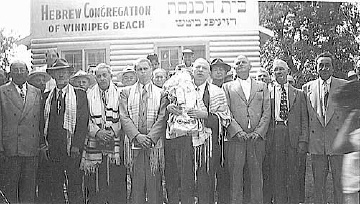
In June 2010 I wrote an article for The Jewish Post & News upon the 60th anniversary of the synagogue’s opening. Here are the opening paragraphs from that article:
“Sixty years ago a group of Winnipeg Beach vacationers decided that what their vacation area lacked was a synagogue. As it happened, a log cabin one-room schoolhouse in the Beausejour area happened to be available.
“In due course, the log cabin was relocated to the corner of Hazel and Grove in Winnipeg Beach, where it stayed for 48 years.”
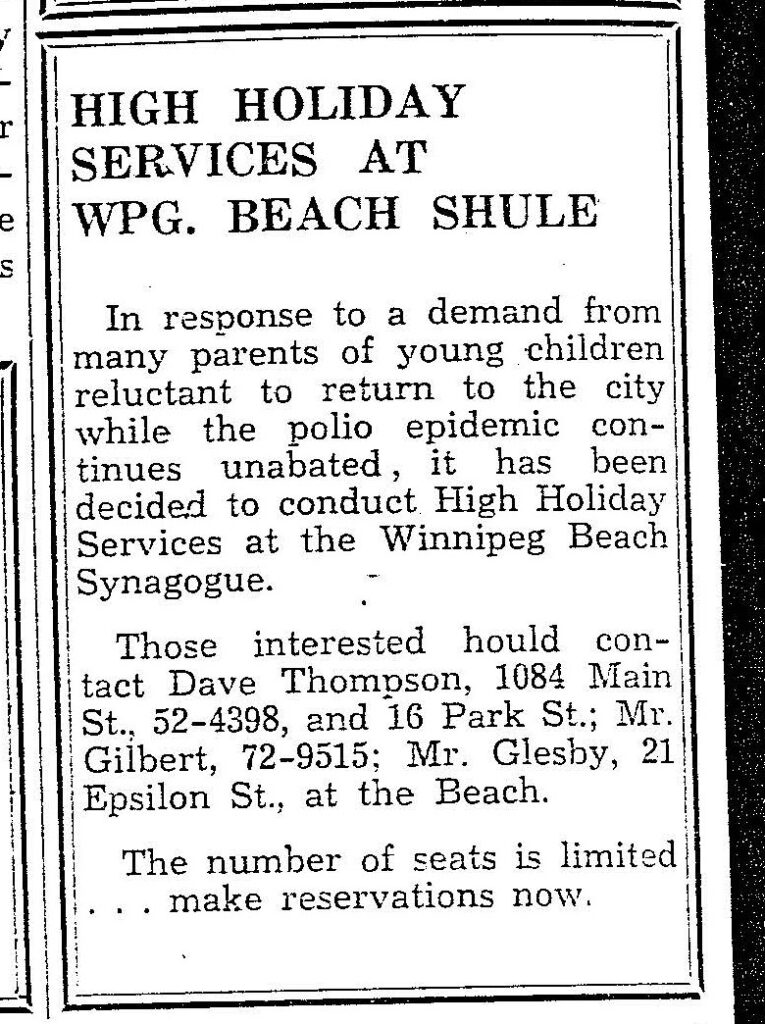
In December 1994 my late brother, Matt, wrote a story about the spraying of antisemitic grafitti on the synagogue which, at that time, was still situated at its original location on the corner of Hazel and Grove in the town of Winnipeg Beach:
“Two 16-year-olds spraypainted slogans like ‘Die Jews,’ ‘I’ll kill you Jews,’ and other grafitti in big letters on the beach synagogue.
“Jim Mosher, a news reporter for the Interlake Spectator in Gimli, said last Halloween’s vandalism against the synagogue wasn’t the first. In the late 1980s, he claimed, it was spraypainted with swastikas.
“Jack Markson, a longtime member of the Winnipeg Beach Synagogue, last week also said he could remember finding anti-Semitic grafitti spraypainted on the synagogue ‘a few years ago,’ and at least twice in the 1970s, when the cottage season was over.”
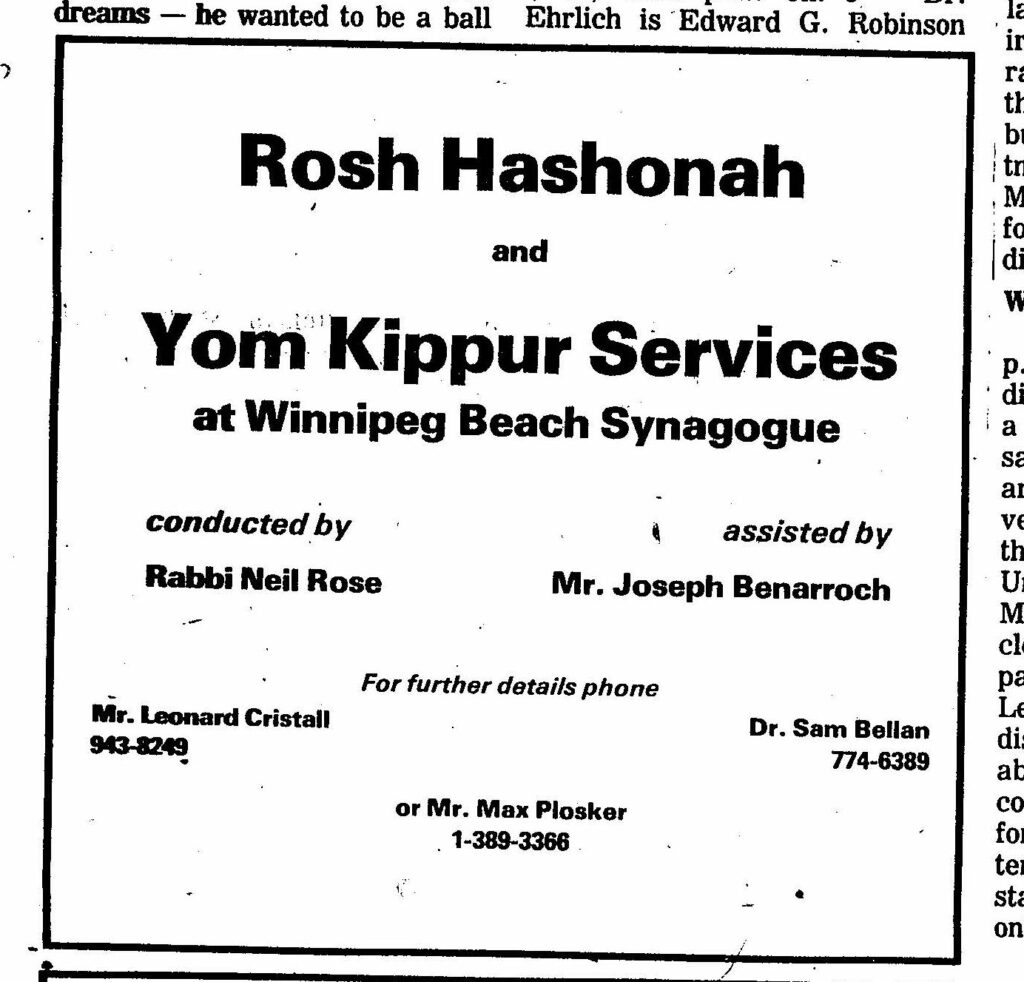
My 2010 article continued: “In 1998 the Town of Winnipeg Beach informed the members of the synagogue that the building would have to be hooked up to the town’s sewer and water system. Rather than incur the cost of $3-4,000, which was thought to be ‘prohibitive,’ according to longtime beach synagogue attendee Laurie Mainster, synagogue goers looked elsewhere for a solution.
“As a result, the board of Camp Massad was approached and asked whether the synagogue might be relocated there, with the understanding that the synagogue would be made available to the camp at any time other than what were then Friday evening and Saturday morning services.
“Over the years the ‘beach synagogue’ had come to be a very popular meeting place for summertime residents of Winnipeg Beach and Gimli. In fact, for years minyans were held twice daily, in addition to regular Saturday morning services. Of course, in those years Winnipeg Beach was also home to a kosher butcher shop.
“While the little synagogue, which measured only 18 x 24 feet, has gone through several transformations, including the move to Camp Massad, and the opening up to egalitarian services in 2007 (The move to egalitarian services was as much a practical necessity as it was a nod to the equality of women – the only Kohen present at the time was a woman!), it has always remained cramped at the best of times.
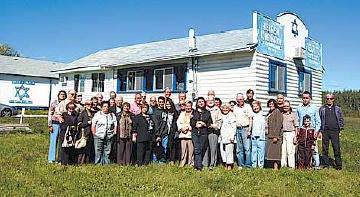
“In recent years the synagogue has seen the addition of a window airconditioner (although to benefit from it, you really have to be sitting just a few feet away), as well as a fridge that allows synagogue attendees to enjoy a regular Saturday morning Kiddush meal following the service.
“According to Laurie Mainster, the Saturday morning service has continued to be popular, even though many of the attendees now drive in from Winnipeg, as they have sold the cottages they once maintained.
“On the other hand, one of the side benefits to being located on Camp Massad’s grounds has been an infusion of young blood from among the camp counsellors.
“Since there is no longer a rabbi available to conduct services (Rabbi Weizman did lead services for years while he had a cottage at the beach), those in attendance now take turns leading the services themselves.
“Anyone may attend services and, while there are no dues collected, donations are welcome. (Donations should be made to the Jewish Foundation of Manitoba, with donors asked to specify that their donations are to be directed to the beach synagogue.)
“Mainster also says that the beach synagogue is now undergoing an expansion, which will be its first in 60 years. An entirely new space measuring 16 x 18 feet is being added – one that will allow for a real Kiddush area. (Until now, a table has been set up in the back of the synagogue and synagogue goers would help themselves to the buffet that is set up each Saturday during the summer. While pleasant enough, it will certainly be more comfortable to have an actual area set aside for the Saturday afternoon after service lunch.)
“As for dress, longtime attendee Abe Borzykowski (in an article written by Sharon Chisvin for the Free Press in 2007) remarked that ‘I don’t think there are many synagogues where people can attend in shorts, T-shirts and sandals and not feel out of place.’ “

As mentioned in that 2010 article, the beach synagogue at that time was about to undergo an extensive remodelling. Here is an article from a January 2011 issue that describes that remodelling process. The article was written by Bernie Sucharov, who has been a longtime member of the beach synagogue:
“The Hebrew Congregation of Winnipeg Beach made a major change to the synagogue this past summer. With the help of many volunteers, Joel Margolese being the project manager, the synagogue was expanded and an addition was built to handle the overflow crowds, as well as to add more space for the kiddush following services.
“The volunteers spent many Sundays during the summer months building the addition. Bad weather caused many delays, but finally the addition was completed one week before the official summer opening.
“The volunteers were: Joel Margolese, Gordon Steindel, Sheldon Koslovsky, Viktor Lewin, Harvey Zabenskie, Nestor Wowryk, Kevin Wowryk, Victor Spigelman, Jerry Pritchard, and David Bloomfield.
“On Sunday, June 25, 2010 a special ceremony was held to affix a mezzuzah to the front entrance door. Gordon Steindel had the honour of affixing the mezzuzah, which was donated by Sid Bercovich and Clarice Silver.
“Refreshments and food for the day were prepared by Phyllis Spigelman, also known as our catering manager. Throughout the summer, Phyllis, Lenore Kagan and other friends prepared the food for our kiddush.
“A sound system was donated by Arch and Brenda Honigman in memory of their father, Sam Honigman z”l. “The system was installed by Joel Margolese and Stevan Sucharov. This will allow the overflow crowd to hear the service in the new addition.
“There were also generous donations of 50 chumashim and an air conditioner. The chumashim were donated by Gwen, Sheldon and Mark Koslovsky. The air conditioner in the new addition was donated by Joel and Linda Margolese.
“The official opening of the synagogue for the summer took place on July 3, 2010. We had an overflow crowd of 70+ people.”
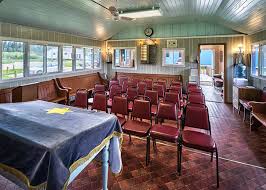
Since that 2010 major addition to the synagogue, it has also added a wheelchair ramp (although I’ve been unable to ascertain exactly when the ramp was built). Also, the synagogue also has its own outdoor privy now. (Attendees used to have to use facilities in Camp Massad.)
And, as already noted in article previously posted to this site (and which you can read at Beach Synagogue about to celebrate 75th anniversary), in recognition of that occasion, on August 2nd members of the synagogue will be holding a 75th anniversary celebration.
As part of the celebration anyone who is a descendant or relative of any of the original members of the first executive committee is invited to attend the synagogue that morning.
If you are a relative please contact Abe Borzykowski at wpgbeachshule@shaw.ca or aborzykowski@shaw.ca to let Abe know you might be attending.
Features
Kinzey Posen: CBC Winnipeg’s former “go-to guy”

By GERRY POSNER If former Winnipegger Lawrence Wall was the CBC go-to guy in Ottawa, CBC Winnipeg had its own version of a go-to guy for many years with none other than the very well known Kinzey Posen. Of course, many readers will recognize that name from his career with Finjan, the Klezmer group so famous across Canada and beyond. It has been written about Posen and his wife Shayla Fink that they have been involved in music since they got out of diapers. And, as an aside, their love and ability in music has now been transmitted to the next generation as in their son, Ariel Posen (but that’s another story).
Kinzey Posen (not to be confused with Posner, or maybe we are to be confused, but who knows for sure?), was a graduate of Peretz School, having attended there from nursery right until Grade 7, graduating in1966. That was followed by Edmund Partridge and West Kildonan Collegiate. Musically, he was in large part self taught. However, he did have some teachers along the way. After moving to Vancouver – from 1974-78, he had the chance to study acoustic classical bass with a member of the Vancouver Symphony Orchestra. When Kinzey lived in Vancouver, he also worked as a jazz musician.
Upon returning to Winnipeg, Kinzey enrolled as a mature student at the University of Winnipeg, where he obtained a Bachelor of Urban Studies degree. Although the degree was in no way connected to the career that followed, his attending the University of Winnipeg was critical to his connecting with the CBC. Why? you ask. Kinzey had a position after graduation working for the Institute of Urban Studies. While there, he met someone who invited him to work for the Department of Continuing Education as one of their program directors. At the time the Department of Continuing Education was located at 491 Portage Avenue, which was also known as the TJ Rice Building. The CBC also leased some space in the same building. According to Kinzey, the CBC part of the building “included HR, different shows and other support offices. Continuing Education was located in the basement and main floor and that’s where I worked.”
KInzey had long had an interest in the CBC, which made the fact that the CBC had some offices in the same building where he was working serendipitous. That Kinzey might be interested in visiting the CBC was not an accident. As a young boy he had a nightly connection to CBC, as it was his ritual to listen to CBC Radio (as well as all sorts of other radio stations across the USA) on his transistor radio every night in bed. He became enamoured of one particular CBC host, Bill Guest, so that when going to sleep, he imagined that he was Guest doing interviews with imaginary guests. That dream of working for CBC became a reality when he had a chance to do a one week gig with Jack Farr’s network program.
Kinzey took a week off from his Continuing Education job and spent five days at the CBC. That week was a training session for Posen, as he had to create ideas, research, pre-interview, write the script, and set up the studio for Farr’s interview. He was almost in his dream job – although not quite – since it was only for one week. His opportunity, however, came in 1988, when he was offered a one-year term as a production assistant – the lowest guy on the ladder, for a show called “ Simply Folk,” with the late Mitch Podolak as the host. Although he was indeed at the bottom as far as those working on the show were concerned, he took a chance and gave his notice to the U of W. The rest is history. In his new job, Kinzey learned how to become a producer. Lucky for him, at the end of the year, when the person he replaced was supposed to come back, she never returned (just like the song, “MTA,” by the Kingston Trio). At that point, Kinzey was hired full time at the CBC.
Kinzey was a fixture at the CBC for 27 years. During those years, Kinzey had the chance to work with Ross Porter, a respected former CBC host and producer, also with Karen Sanders – on the “Afternoon Edition.” One aspect of Kinzey’s job on the Afternoon Edition was to come up with ideas, mix sound effects, arrange interviews and music, to create a two-hour radio experience. In addition, he covered jazz and folk festivals and, as a result, was exposed to some of the best musicians in the world. With Ross Porter in the 1990s, he worked on a network jazz show called “ After Hours,” which was on from 8-10 PM five nights a week. Kinzey was involved with writing the scripts, picking the music, and recording the shows, as well as editing them and then presenting them to the network for playback.
Of course, over his career, Kinzey had many memorable moments. He told me about one of them. The story revolved around the National Jazz Awards one year in particular. The awards were to be broadcasted after the National News which, in those days, began much earlier in the evening, and were over by 8:00 pm. The legendary Oscar Peterson was lined up to play a half hour set at the awards, starting at 7:30. But, as Kinzey told me, Oscar Peterson had a “hate on” for the CBC ecause one of his recorded performances was wrongly edited and he refused to appear on CBC under any circumstances. As the time neared 8:05 PM, which was when the CBC was to begin its broadcast of the jazz awards, it became apparent that Oscar was not going to finish on time. As the producer of the awards show, Kinzey was tasked with telling Oscar Peterson to wrap it up and get off the stage. There was Kinzey Posen, a huge fan of Oscar Peterson, now faced with the prospect of telling Oscar – while he was still playing – with 500 people in the audience, to stop and get off the stage. Not often was or is Kinzey Posen frozen, but that was one such moment. There was one loud “Baruch Hashem” from Kinzey when Oscar completed his set literally just in time.
Clearly, Kinzey was part of a very successful run with After Hours as it was on the air for 14 years. It was easily one of the most popular shows on CBC Radio 2, and a winner of several broadcasting awards. Kinzey also played a major role in producing a two part documentary about legendary guitarist Lenny Breau.
When After Hours ended, Posen became one of the contributing producers to Canada Live and specialized in producing live radio specials for the network, such as the Junos, for CBC Radio One and Two. Needless to say, his career planted Posen in the world of some top notch musicians, including his time spent working with Robert Plant (Led Zeppelin), Dave Brubeck, Randy Bachman, Chantal Kreviazuk and a list of prominent names in the Canadian, American and European music spheres. Locally, the CBC came to refer to Kinzey as the Jewish expert. I would add music expert to that title.
After his 27 year run at the CBC – and before he fully retired, Kinzey went on to work for the Rady JCC as a program director for a year and a half. Of course, to say that Kinzey Posen is retired is a major contradiction in terms. You really can’t keep him down and he has his hand in a variety of programs and projects – most of which he remains silent about, as is his style.
When I realized the full depth and talent of Kinzey Posen, I quickly concluded that he must certainly be related to me. Even if he isn’t, I now tell people he is.
